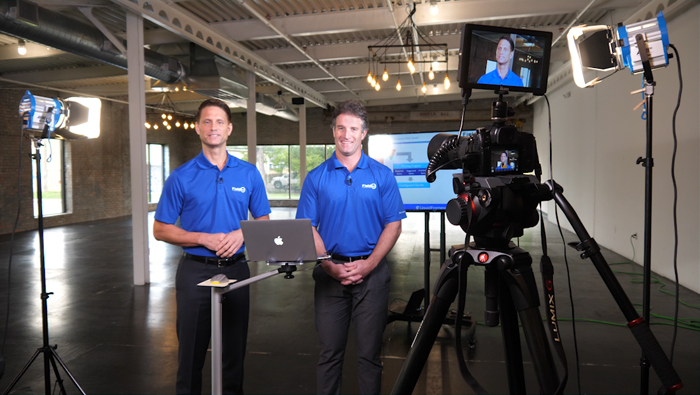15 Common Video Production Terms You Should Know
“We need to go shoot someone, so grab the dead cat and make sure we are not hot.”
Ok, you probably wouldn’t hear a video professional say all of these things in one sentence, but these are all common video production terms that may raise an eyebrow if you don’t know what they mean. While there are hundreds of video industry terms, it could be handy to be familiar with a few of them. We picked out some of the most common video production language you might hear when working on your next video project.
- Shoot – If you hear a video professional say they are going to, “Go shoot someone today,” they are not going to be committing a crime. Although it sounds like it, right? The most common video production term for recording video is called “shooting” the video. Don’t worry, you are safe.
- Shot – “Let me get that shot.” This is just getting different video clips of various camera views.
- Shot List – This is basically a list of all of the video clips the videographer should get during the production. The producer usually plans the “shot list” before the shoot begins, but it is pretty common to add shots to the list as the interview goes on.
- B-roll – any video needed to accompany an interview. This could be action shots, demonstrations, the person doing something like reading a paper or walking down a hall.
- Establishing shot – Every video needs an image to establish what the video is about. Usually, it’s a wide shot that gives the viewers an idea of the setting and surroundings.
- Closeup (CU) – A camera shot where the main person is viewed at a close range. Sometimes a CU is shot pulled back a little which would be called a “medium closeup” or even an “extreme closeup” which is super close in on the person’s face.
- Headroom – Space between the top of the person’s head and the areas around the edge. Often one of the biggest mistakes inexperienced videographers make is giving too much headroom. At the same time, you need to know how and where the video will be used and what graphics will be needed to ensure the shot composition allows for the appropriate space.
- Lav – This is just a short name for Lavalier microphone. This is a small clip-on microphone that will be put on your clothing. Don’t be surprised if the producer asks you to string the microphone up your shirt so the wire is not exposed or obviously moving around during the interview.
- Remote – Video shoot done on location and not in a studio environment.
- Soundbite – This is a portion of the interview cut out to be used for the video production. It could be a few sentences said during the interview that will match up with other “soundbites” and put together with b-roll to make the video.
- Hot – You may hear someone say, “This video is hot!” “Hot” video is about the exposure being too bright, making the picture seem faded or super bright. The color temperature of the video can be easily adjusted before the shoot begins.
- White Balance – Have you ever seen video that looks blue or yellow? There is a good chance the videographer did not do a “white balance” before shooting the video. A “white balance” is when the videographer uses something “white” to set the video levels before the shoot begins. Often, this has to be done several times during a shoot depending on the location, timing, etc. (For example, if you are outside and the sun is going down the lighting will change frequently, so the white balance will need to be adjusted.)
- Dead Cat – You’ve probably seen one of these and thought, “That looks like a dead animal.” Often when a video is shot outside, the microphone can pick up wind blowing noise. Adding a big, furry sock looking item around the microphone cuts out the wind noise and helps the audio from the person being interviewed. It’s often called a “dead cat” but we think it looks more like a raccoon tail.
- Bounce – Bounce lighting is when you use something to bounce or reflect light on to a subject. This is helpful if you are shooting video outside. You might see someone holding up a large round white or silver piece of material to use as a “bounce.”
- Export – this is the process of taking your edited video project and making into a file that can be shared or uploaded. Exporting can take minutes or sometimes hours.
If you have a handle on those common video production terms, you’ll go into your video shoot with less stress. While it’s pretty obvious what a videographer does while on a shoot, people often ask about the roll of the producer. The producer is in charge of so many things, we wrote an entire article spelling out the responsibilities.
